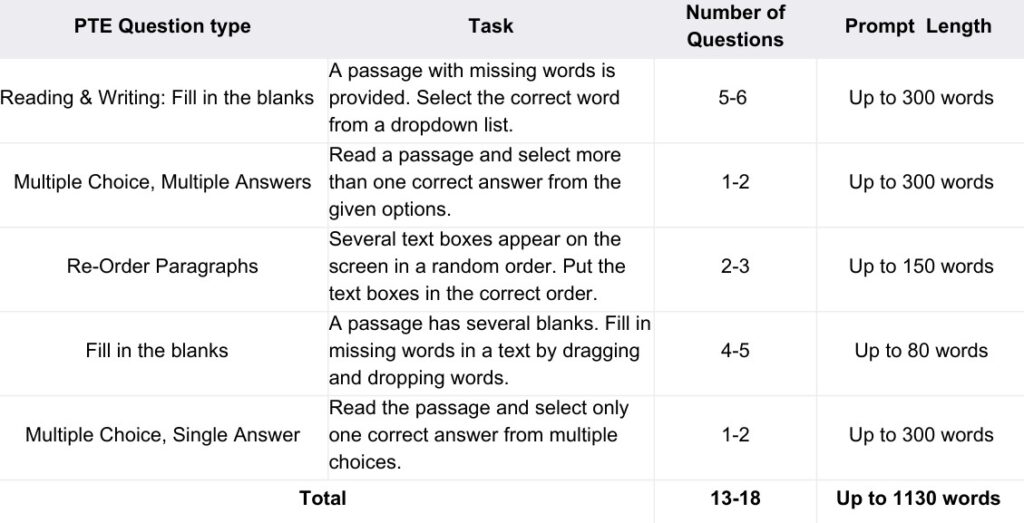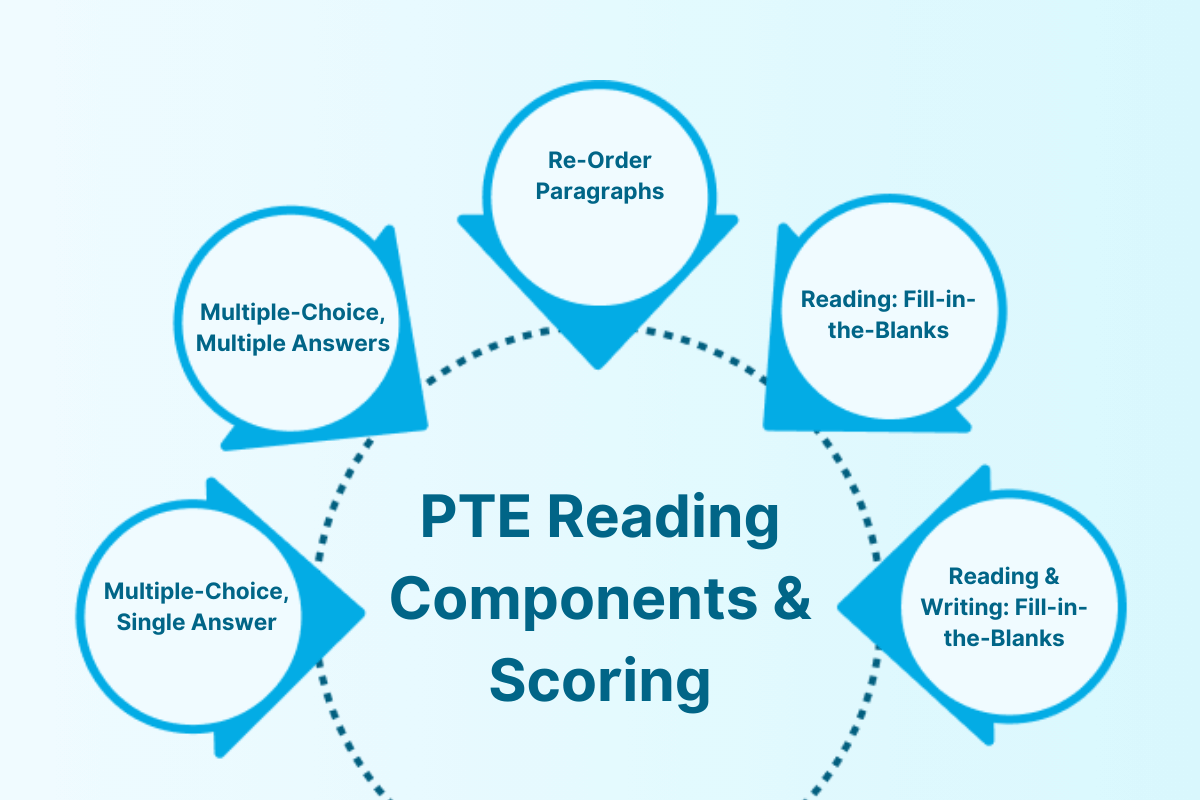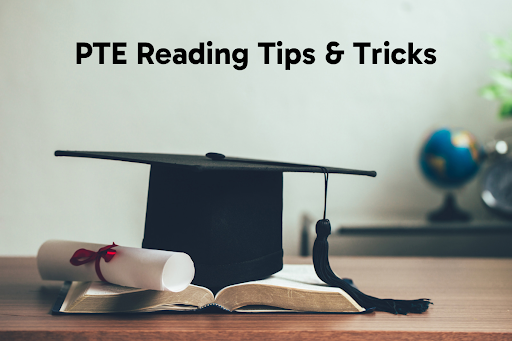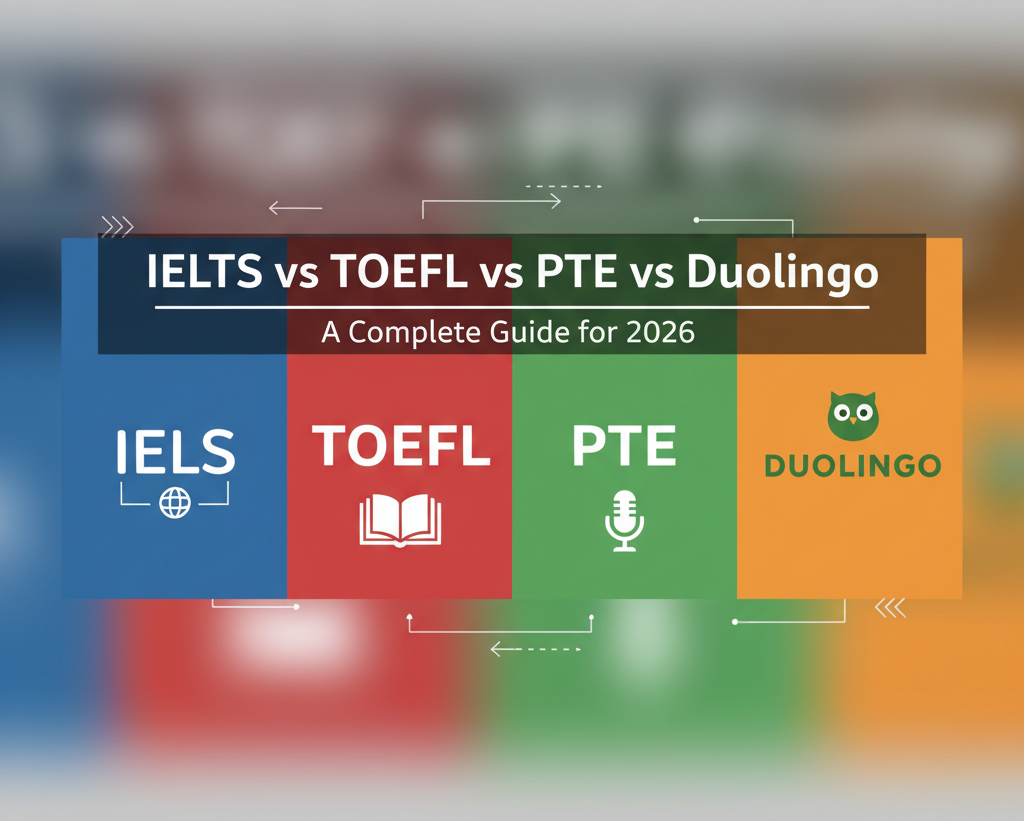With over 1 million PTE tests taken each year, it’s clear that the PTE exam is a popular choice for students aiming to study abroad.
So, if you’re ready to ace the PTE reading section, it’s essential to understand the strategies for each section of the reading test. Whether you’re looking for PTE read aloud tips and tricks or PTE reading fill in the blanks tips and tricks, having a solid game plan will give you the edge you need.

80+ Practice Questions for all sections
Instant AI Scoring
Detailed Score Improvement Report
Recorded Video Lessons
By mastering these strategies, you’ll be better equipped to tackle each question type confidently. This blog has some excellent PTE reading tips and tricks that are golden keys to opening the doors to your study abroad dreams.
Dive in!
What is the PTE Reading Test?
The PTE Reading test is a crucial part of the PTE exam, designed to assess your ability to understand written English. PTE academic scores are accepted by over 3,500 organisations worldwide, making them valuable certifications for your study abroad journey.
The reading section evaluates your comprehension, vocabulary, and grammar skills through various question types. Whether filling in the blanks or rearranging paragraphs, each task challenges different aspects of your language ability.
To give you a clearer picture, here’s a breakdown of the question types you’ll encounter and how many of each you can expect, all within a 29-30 minutes timeframe.

How is the PTE Reading Section Scored?
The scoring for the PTE Reading section is automated and based on the accuracy of your responses. Each question type contributes differently to the overall score, with the final score based on the sum of individual question scores, ensuring a fair assessment of your reading ability.
The overall performance in the Reading section contributes to your final PTE Academic score, which ranges from 10 to 90. The scoring criteria include:
- Correct/Incorrect: Some questions, such as multiple-choice single-answer, are marked as either correct or incorrect.
- Partial Credit: Reorder paragraphs and multiple-choice, multiple-answer questions award partial credit for correct responses.
- Integrated Scoring: Fill-in-the-blank questions contribute to both the reading and writing scores.
Read More:
PTE Reading Section-Wise Strategies
You will naturally want the best results after investing approximately INR 17K (USD 202) in the exam.
But the reading section can feel like a maze, and getting lost in the details is easy. That’s where these PTE reading tips and tricks come in handy.

Here are some of the top section-wise PTE reading tips to score 90.
Multiple-Choice, Single Answer
- Read the question first to understand what information you need.
- Skim the passage to get the main idea before reading in detail.
- Pay attention to frequency words (such as always, sometimes, never, many, all, often, only); eliminating these may help you find the right answer.
- Since there is no negative marking, answer every question instead of skipping it.
- Focus on keywords and synonyms that match the question to locate relevant information quickly.
- Nearly 60% of the answers are found in the first or last two lines of the passage.
- Practise paraphrasing by expressing ideas using different words.
- Use the elimination method to narrow down choices and improve accuracy.
Multiple-Choice, Multiple Answers
- Read the passage carefully to grasp the overall message.
- Avoid selecting answers based on assumptions or prior knowledge, as incorrect choices can lead to negative marking.
- Look for any repeated words in options that can help you find the right answer quickly.
Reorder Paragraphs
- Identify the topic sentence, which usually introduces the main idea (often lacks pronouns like “it” or “they”)(. Start by finding this sentence.
- Check for linking words (e.g., however, therefore) and transitional phrases that connect sentences logically.
- Use the trial and error method by placing sentences in different orders until they make sense.
Fill in the Blanks
- Read the entire sentence before selecting a word to understand the context.
- Focus on grammatical structure and context to choose the correct word.
- Identify the part of speech (noun, verb, adjective, etc.) required for each blank.
- Look for collocations (commonly used word combinations) to select the correct option.
Reading & Writing: Fill in the Blanks
- Read the passage carefully to understand the overall meaning.
- Focus on contextual clues in the sentence to identify the missing word.
- Pay attention to words before and after the blank to choose the correct word form.
- Think about collocations and academic vocabulary commonly used in English.
- Ensure that your chosen word fits grammatically within the sentence.
Time Management Strategies for PTE Reading
Effective time management is crucial for excelling in the PTE Reading section. Here are some key strategies.
- Skim and Scan: Quickly go through the text to get the main idea and locate key information.
- Prioritise High Scoring Questions: Focus more on Fill in the Blanks and Reorder Paragraphs as they carry higher weightage.
- Set timer: Allocate your time wisely across all questions to ensure you don’t spend too much time on one section.
- Skip and Return: If stuck, move on and return later to save time.
Common Mistakes to Avoid in PTE Reading
- Misunderstanding question types: Familiarize yourself with different question formats to avoid confusion.
- Skipping Instructions: Always read the instructions carefully to understand what is required.
- Reading Every Word: Instead, focus on keywords and main ideas to save time.
- Lack of Vocabulary: Improve your vocabulary to better understand complex passages.
Read More:
How to Improve Your PTE Reading Score
Before diving straight into the PTE exam, a little preparation can make all the difference. Like warming up before a big game, getting your mind in gear with pre-exam PTE reading tips and tricks will set you up for success.
Whether brushing up on vocabulary or practising time management, these strategies will help you enter the exam room feeling confident and ready to tackle whatever comes your way.
Ready to learn how to improve reading in PTE? Check out the pre-exam PTE reading tips and tricks.
Best Books to Prepare for PTE
When preparing for the PTE, having suitable study materials can make all the difference.
Below is a list of some of the best books and their authors that can help you ace the exam.
| Book | Author |
|---|---|
| The Official Guide to PTE Academic | Pearson |
| PTE Academic Testbuilder | MacMillan |
| PTE Academic Practice Tests Plus | Pearson |
| The PTE Academic 79 Plus | I. Glendinning, P. Marks |
| PTE Academic Expert B2 Coursebook | David Hill |
PTE Practice Tests
Practising tests is one of the most effective ways to prepare for the PTE. These tests simulate the exam environment, helping you become familiar with the question formats and time constraints.
Below is a list of top PTE practice test resources and their developers.
| Practice Test | Developer |
|---|---|
| PTE Academic Official Practice Tests | Pearson |
| PTE Practice Test – PTE Tutorials | LET’S UPSKILL PTY LTD |
| PTE Academic Practice Tests Plus | Pearson |
| PTE Practice Test 2025 | LeapScholar |
| E2Language PTE Practice Tests | E2Language |
| Aussizz Group PTE Mock Test | Aussizz Group |
PTE Apps
Preparing for the PTE on the go? Several apps are designed to help you study effectively wherever you are.
Below is a list of some of the best PTE preparation apps and their developers.
| App | Developer |
|---|---|
| PTE Academic Official Practice | Pearson |
| PTE Tutorials | LET’S UPSKILL PTY LTD |
| PTE Preparation – APEUni | APEUni |
| PTE Success – Exam Preparation | Pineapple Studio Pty Ltd |
PTE Preparation at Home
Preparing for the PTE exam from the comfort of your home can be as effective as attending traditional classes, especially with the right resources and strategies. With a wealth of online materials and tools, you can tailor your study plan to fit your schedule and learning style.
Here are some essential steps to help you prepare for the PTE at home.
| Step | Details |
|---|---|
| Read Regularly | Improve comprehension by reading books, newspapers, and journals |
| Join English-Speaking Groups | Practise speaking in online English forums or groups |
| Enroll in Online PTE Coaching | Get structured courses and mock tests from online PTE coaching centres. |
| Boost Listening Skills | Listen to TED talks, BBC radio, and podcasts for listening practise |
If you’re taking the PTE, your dream of studying abroad is near! Need help with the next step? Leap Scholar’s guidance counsellors are just a chat or video call away to guide you through the application process.
We offer personalised guidance to help you shortlist colleges, plan finances, review SOPs, and get through the visa process.
Frequently Asked Questions
-
Q. What are some PTE read-aloud tips and tricks for boosting my speaking score?
Ans. To excel in the read-aloud section, practise speaking clearly and steadily. Recording yourself with PTE read-aloud practice-free tools can help you identify areas for improvement in your pronunciation and fluency.
-
Q. What should I focus on for PTE reading fill in the blanks tips and tricks?
Ans. When working on reading fill-in-the-blanks, focus on understanding the context surrounding the blank. This helps you choose the word that best fits the sentence’s meaning and grammatical structure.
-
Q. How can I practise effectively using the PTE reading practice test?
Ans. Use a PTE reading practice test to familiarise yourself with the exam format and question types. After completing each test, review the answers to understand your mistakes and improve your strategies.
-
Q. Where can I find PTE reading practice with answers?
Ans. You can find PTE reading practice with answers on various online platforms, including the official PTE website. These resources help you learn from your mistakes by providing explanations for correct answers.
-
Q. Can I improve my score with PTE read-aloud practice-free tools?
Ans. Yes, PTE read-aloud practice-free tools are excellent for improving your fluency, pronunciation, and confidence. Regular practice with these tools can significantly boost your speaking score.
-
Q. How should I manage my time using PTE reading tips and tricks?
Ans. Divide your time wisely across all questions, allowing enough time to review your answers. Practise pacing yourself during PTE reading practice tests to build a steady rhythm that works for you.
-
Q. Why must PTE multiple choice single answer tips and tricks be used?
Ans. Using PTE multiple choice single answer tips and tricks helps you avoid common pitfalls, such as choosing partially correct answers or being misled by distractors. This strategy increases your chances of selecting the correct answer every time.
-
Q. How can I improve my PTE reading?
Ans. Focus on improving your vocabulary, skimming and scanning techniques, and understanding sentence structures. Practise reading academic articles and summarising key points. Regularly attempt mock tests and analyse your mistakes. Use time management strategies to avoid spending too long on one question.
-
Q. How do I get a 90 in reading PTE?
Ans. To score 90, develop strong reading comprehension and analytical skills. Practise all question types, especially Fill in the Blanks and Reorder Paragraphs. Read complex texts daily to improve speed and accuracy. Use official PTE materials and take full-length mock tests to track progress.
-
Q. What is the 3 second rule in the PTE exam?
Ans. The 3-second rule refers to the time you should take to start speaking after the microphone turns on in the speaking section. If you stay silent for more than 3 seconds, the microphone will turn off, and your response won’t be recorded. To avoid this, begin speaking immediately after the beep.
-
Q. How to pass the PTE exam in the first attempt?
Ans. Understand the test format and practise each section thoroughly. Work on your time management, grammar, and pronunciation skills. Use official PTE practice tests to familiarise yourself with question types. Stay calm during the exam and follow a structured preparation plan.
-
Q. How can I effectively use PTE reading reorder paragraph tips and tricks during the exam?
Ans. Identify the topic sentence first, as it introduces the main idea. Look for logical connectors, pronouns, and sequence indicators to arrange sentences correctly. Pay attention to subject-verb agreement and sentence flow. Practise regularly to improve speed and accuracy.

 80+ Practice Questions for all sections
80+ Practice Questions for all sections













Have Questions? Get Guidance to reach your Dream University
Connect with India's finest counsellors and biggest study abroad community.
Get Guidance